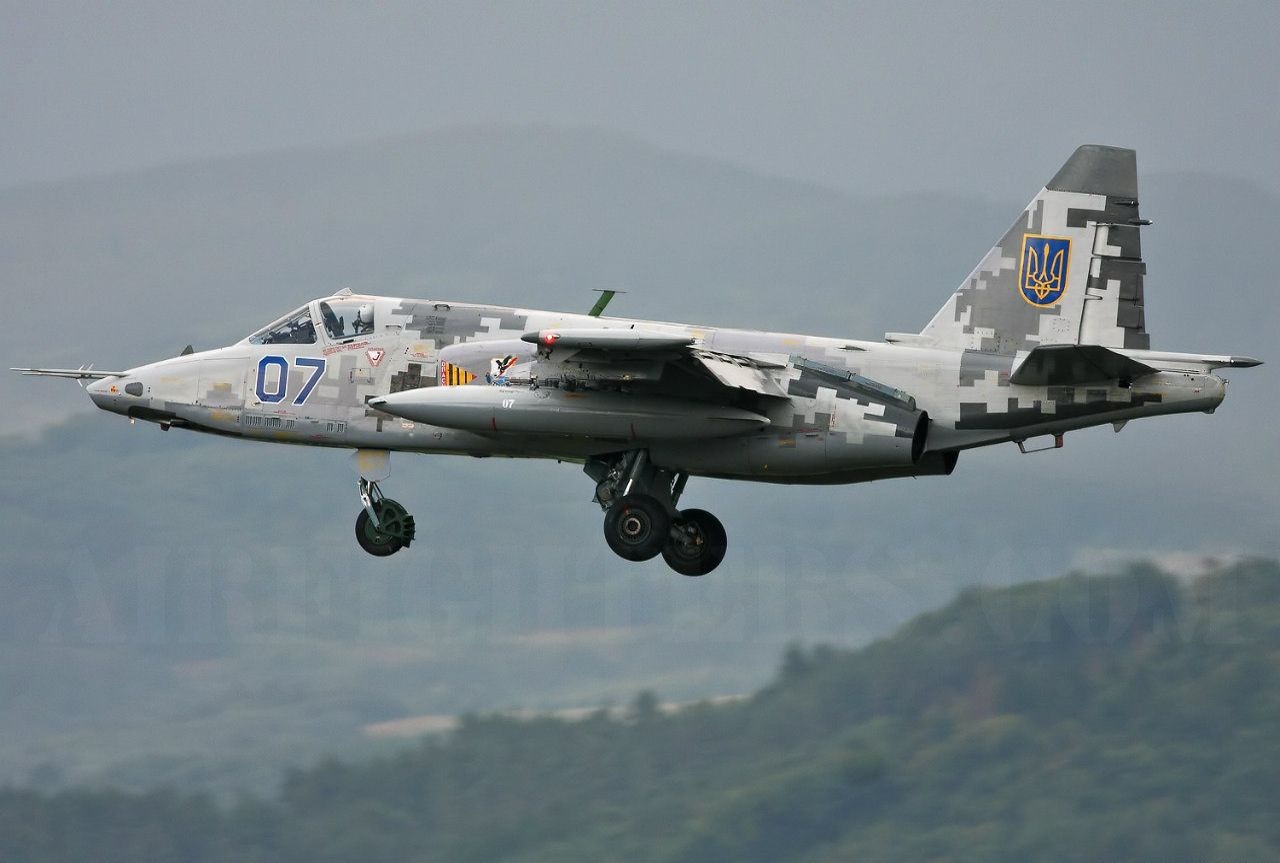A dramatic video surfaced on social media showing an IL-76 military aircraft flying at a very low altitude and almost crashing into static Su-25 fighters.
The video footage shows that the air base’s pilots and technical staff are both intrigued by and frightened of such a flight due to the noise produced by the aircraft’s engines and the incredibly low altitude at which the aircraft was flying.
In a circumstance like this, even one crew member’s mistake may lead to disastrous results. However, the pilots were able to execute the aircraft’s passage over the military airfield flawlessly.
The footage is believed to be quite old, but it has only recently come to light. The airbase is thought to have belonged to the Ukrainian Air Force based on the color and markings of the aircraft. However, the name of the facility remains unknown.
Russia and Ukraine have frequently used the Su-25 Frogfoot in the ongoing war. Both Air Forces fly their Su-25 aircraft at low altitudes to evade detection by the enemy’s radar equipment.
However, the aircraft’s low-flying approach makes it susceptible to opponent MANPADS, which are to blame for the majority of aircraft shoot-downs by both sides in the ongoing war.
The Frogfoot has suffered heavy losses during the ongoing combat, with the air forces of both countries primarily employing it for ground assaults. The plane also earned the title of “most destroyed” fighter in the Ukraine conflict.
Meanwhile, on January 19, Russian MoD announced that the Russian Aerospace Forces [VKS] gunned down a Ukrainian Su-25 military plane in the sky over the “Donetsk People’s Republic.”
“Fighter aircraft of the Russian Aerospace Forces in the area of the settlement of Poltavka of the Donetsk People’s Republic shot down a Su-25 aircraft of the Ukrainian Air Force in the air,” said the official representative of the Russian Defense Ministry, Lieutenant General Igor Konashenkov.
Based on visual verification, the military tracking site Oryx said that 40 Su-25s had been destroyed, 25 of which belonged to Russia and 15 to Ukraine.

Su-25 Frogfoot
The Su-25 “Frogfoot” is a conventionally designed single-seat CAS fighter with a strongly armored airframe and armored fuel tanks.
The base Su-25 variant, while lacking the advanced avionics of most modern multirole fighters, does include a basic navigation radar and standard chaff and flare countermeasures providing minimal defense against some air-to-air and ground-launched missiles.
Later Su-25 versions included multiple layers of redundant controls to increase their chances of surviving a strike. The Su-25 pilot was enclosed in a bathtub-style cockpit, akin to the US A-10 Thunderbolt II CAS plane.
The Su-25’s weaponry has conventionally comprised rockets, cluster bombs, and unguided 250- or 500-kilogram bombs.
It has a top speed of 950 km/h. The plane is powered by two Soyuz/Gavrilov R-195 turbojets, each providing a maximum takeoff weight of 17,600 kilograms and a thrust of 44.17 kN.
The Su-25 has a fighting radius of 375 kilometers and a range of 750 kilometers. The aircraft has a service ceiling of 7000 meters and can climb at a rate of 58 meters per second.
The Frogfoot’s ten underwing pylons can handle a range of air-to-air and air-to-ground weapon systems. The aircraft can carry air-to-ground Kh-23, Kh-25ML, and Kh-29l missiles and air-to-air R-3S and R-60 missiles.
Along with those weapons, the aircraft can also carry S-24 240mm guided missiles, S-25 330mm guided rockets, B-8M1 pods for 80mm S-8 rockets, and UB-32A pods for 57mm S-5 rockets.
With a magazine capacity of 250 rounds and a burst firing rate of 3,000 rounds per minute, the Gryazev-Shipunov GSh-30-II 30mm twin-barrel cannon is located on the port side of the aircraft’s bottom fuselage.
The Su-25 flew its first combat flights in Afghanistan during the Soviet occupation, conducting tens of thousands of sorties targeting Mujahideen locations.
The Russian Sukhoi Design Bureau began work on a proposal to modify the Su-25 into the Su-25SM attack aircraft in 2001. In 2007, the updated aircraft type was introduced into service with the Russian Aerospace Force (VKS).
The upgraded aircraft model is outfitted with a Phazotron Kopyo-25M radar, an SUO-39 fire control system, a Pastel countermeasures kit, and a navigational computer.
- Contact the author at ashishmichel(at)gmail.com
- Follow EurAsian Times on Google News




